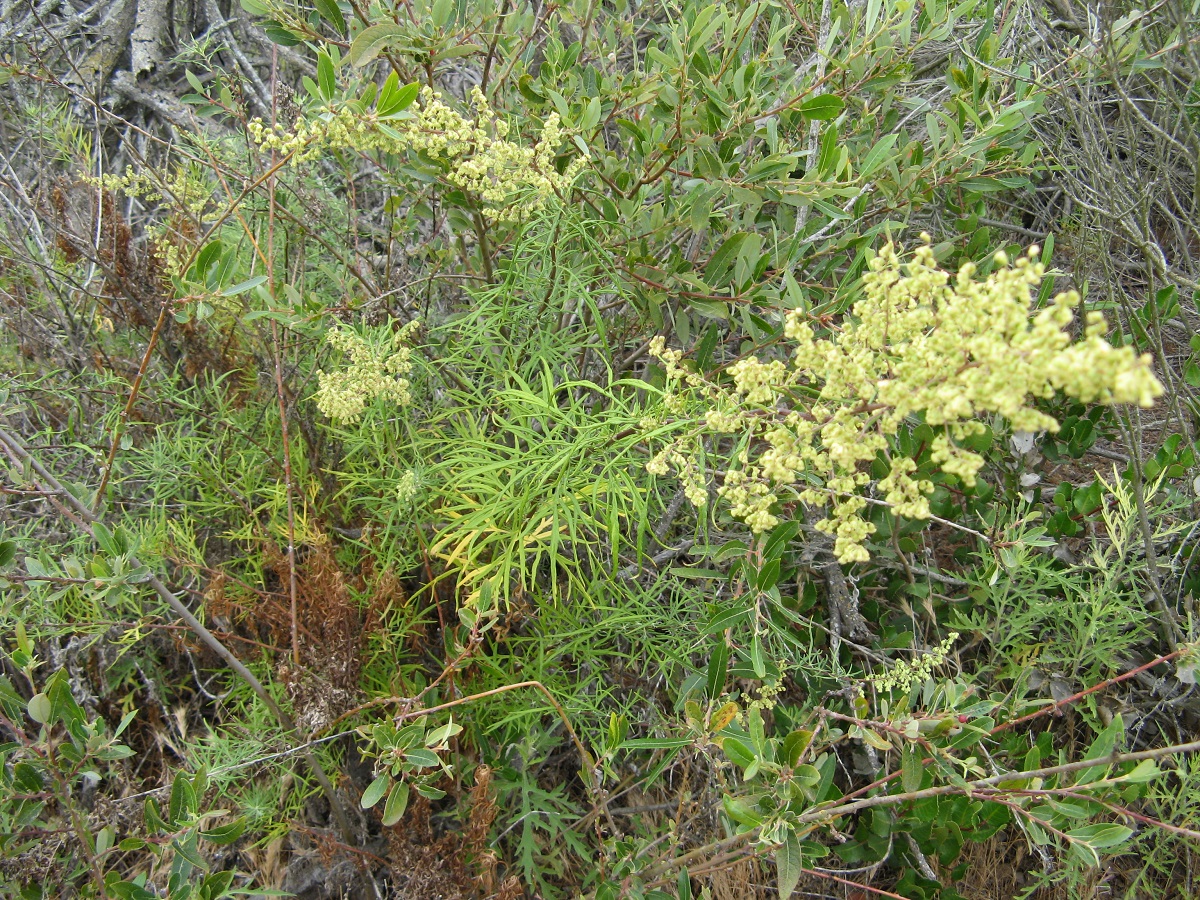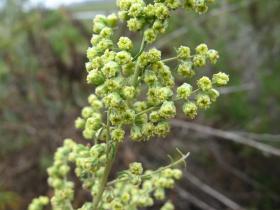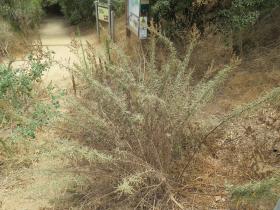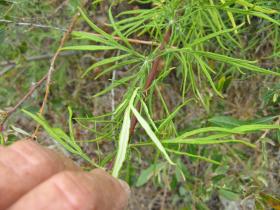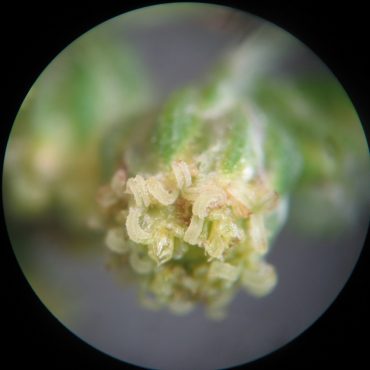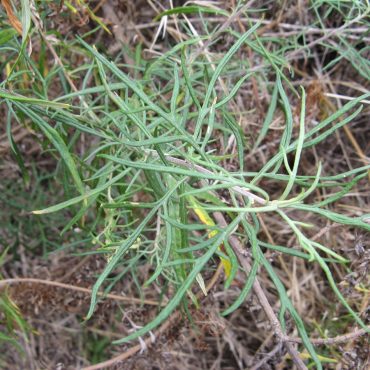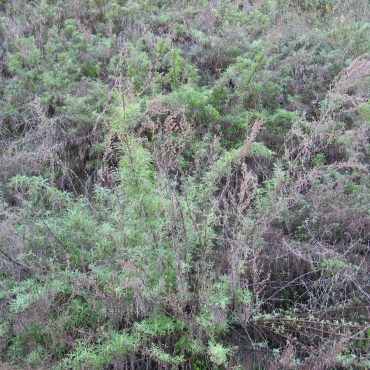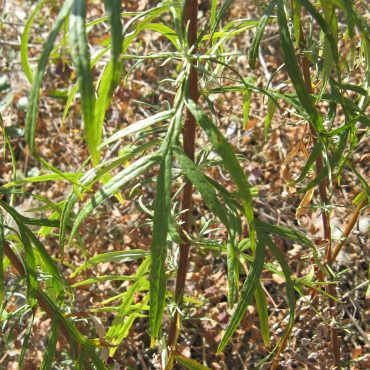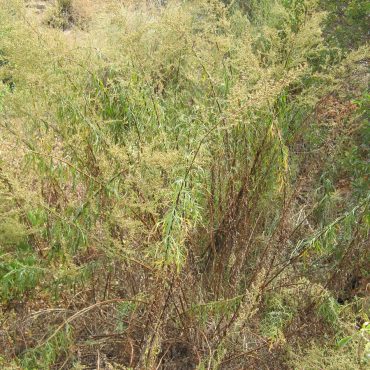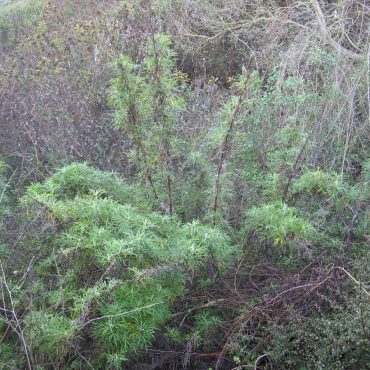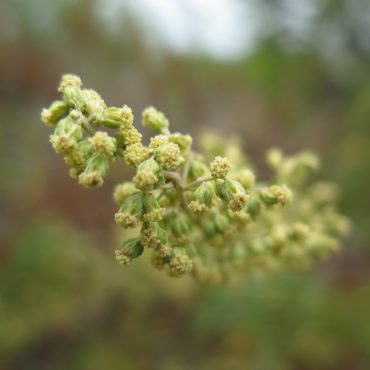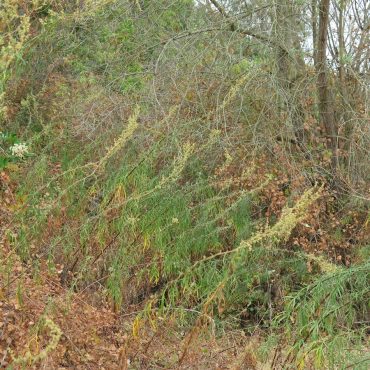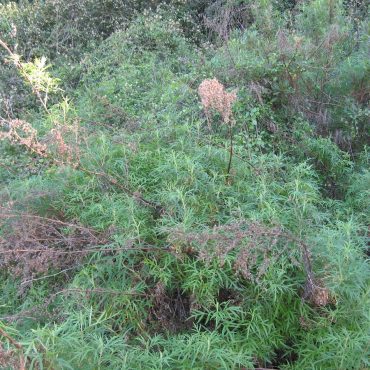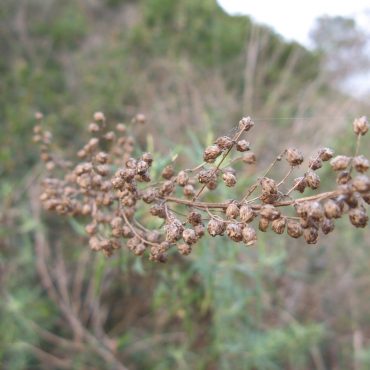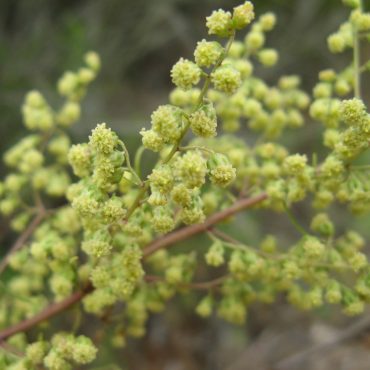Palmer’s sagewort (or San Diego sagewort, Artemisia palmeri) produces tall, arching stems which, in spring, are lush with deeply dissected leaves, green above, pale beneath. By summer, terminal clusters of small, yellowish flowers appear. Sagewort is closely related to California sagebrush, a relationship apparent from the flowers.
San Diego sagewort is endemic to the coastal sage scrub and chaparral of coastal southern California and northern Baja, mainly in along coastal creeks and drainages and other small pockets that may receive extra moisture. Because of habitat loss and flood control efforts, Palmer’s sagewort has lost much of its original habitat and is now classified as rare, threatened or endangered by the California Native Plant Society.

